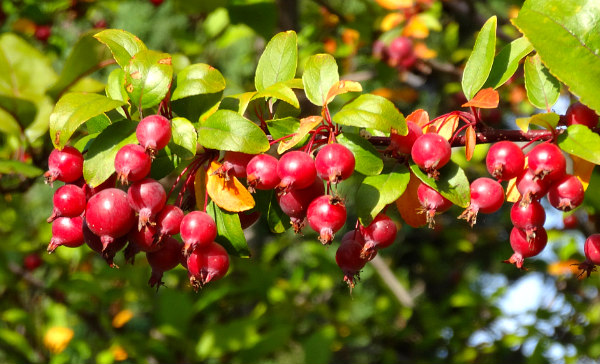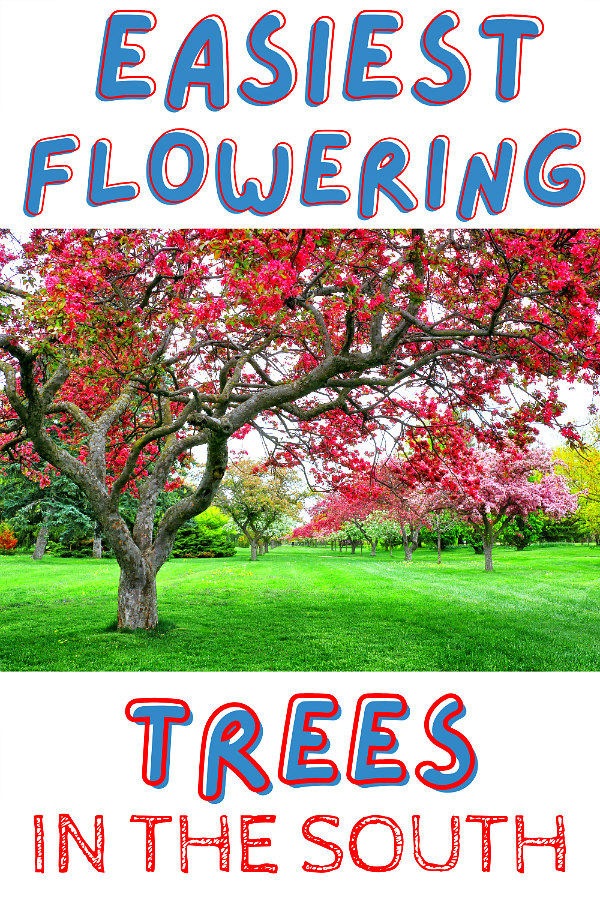Planting Flowering Southern Crabapple Trees In Southern Gardens: Everything You Need To Know

Looking for the best small flowering trees to plant in your yard in 2022? Let me humbly suggest gorgeous flowering southern crabapple trees. They are about as easy to take care of in the garden as you can get. Like other home and garden inspiration and patriotism we love to share, find out how to plant this no-fuss small ornamental tree in your front yard, backyard, or skinny side yard too. You’ll enjoy the glorious color and fruit for years to come. Here’s everything you need to know to grow and take care of these unique fruit trees in the south!
WHAT’S SO SPECIAL ABOUT FLOWERING SOUTHERN CRABAPPLE TREES?
Want to watch the #youtubeshorts video version of this post? Click below.
Southern crabapples have grown in popularity in recent years for their drought tolerance, low maintenance, multi-seasonal beauty, and gorgeous foliage.
Oh, and you get fruit to boot!
We planted our first crabapple last year. We easily added one bare, red crabapple tree on one side of our driveway as a memorial to our son. Even in the heat of summer, the leaves on it reminded us of fall. I personally think they are far more beautiful and versatile than normal apple trees with blooms that resemble fragile paper lanterns that glow in the moonlight.
I’m beyond excited and already obsessed!
I’ll share the exact details of the trees we bought for our front yard in Georgia, zone 8. Although they have varying colors, the details will be similar for buying and planting them in southern gardens.
ULTIMATE FLOWERING CRABAPPLE TREES GUIDE
This is a detailed garden guide and the only one you’ll need. Skim through to find details answers to your burning questions you may be wondering, such as:
- How big do flowering crabapples get?
- How do you plant them?
- When do crabapple trees bloom?
- How do you take care of a crabapple tree?
- How often do you water them?
- Are crabapples really apples?
- Can you eat them?
- How do they taste?
- Are they invasive?
- When should crabapple trees be pruned?
- Should I fertilize a crabapple tree?
- What is the lifespan of a crabapple tree?
In this detailed plant guide, you’ll learn it all, including how, when, and where to plant them in your southern garden.
SIZE
Most southern crabapple trees grow about 15 to 20 feet tall and wide. You can also choose dwarf or semi-dwarf varieties. They are must shorter at 5 to 10 feet. Near maturity, these slender-ish fruit trees become amazing shade trees.
WHEN TO PLANT
As an easy peasy fruit tree, planting time for flowering crabapple trees are flexible. Ideally, plant in early spring or fall when temperatures are mild. In a pinch, they can also be planted in the summer and bare-root trees can be planted anytime throughout spring.
WHERE TO PLANT
Picking the right planting spot is key to your success with crabapple trees. You’ll want to find a location that offers full sun and has well-drained soil. Clay soils are not ideal but can be amended with organic matter like compost to improve drainage.
HOW TO PLANT
In southern climates, rain can be excessive at times, so it’s imperative not to plant fruit trees too low. Make sure that the top fruit tree root ball is an inch or two above the soil line. When planting any fruit tree, give it plenty of room to grow – at least 15 feet between the trunk and any other plants nearby.
Dig a hole that’s twice as wide as the root ball but only as deep as the root ball. Place your tree inside the hole and backfill with soil until you’ve covered all of the roots – but not any higher than where your tree was originally planted in its pot!
Pack down around them firmly so there’s no air between them or their new home. Water well immediately after planting, then continue watering once a week during hot weather to establish good growth habits before winter arrives.
You can also use mulch to help retain moisture while keeping weeds away from your young fruit trees’ delicate trunks.

CONTAINERS
For planting in a container, choose one that is at least 18 inches wide. Mix some organic matter like composted manure or peat moss with the soil when planting to improve moisture retention and drainage.
WATERING
Water newly planted trees thoroughly and then make sure the soil remains moist but not soggy. Once the tree is established, you don’t have to water it unless there’s a drought in your area.
The best time to water the tree is when it’s dry out – either early morning before any hot weather sets in or late evening after temperatures have cooled down. Watering once every two weeks should suffice during normal conditions (i.e., no droughts). After established, no excess watering is needed unless extremely dry.
FERTILIZING
In order to produce good fruit, flowering crabapples don’t typically require fertilizer unless the soil is less than healthy. Once the tree is established, you can switch to a slow-release organic fertilizer in late winter or early spring.
Avoid ever using high-nitrogen fertilizers, which can promote vigorous growth at the expense of flower production. A little bit of nitrogen is good for young crabapple trees, but too much will encourage lots of vegetative growth instead of flowers.
Crabapple trees don’t require heavy feeding and overfertilizing can actually damage them. Use a balanced organic fertilizer like fish emulsion or compost tea every year or two instead of synthetic fertilizers.
If you fertilize your crabapple tree, use a general-purpose fertilizer that is low in nitrogen and high in phosphorous. This type of fertilizer will help promote blooming and fruiting. Fertilize crabapple trees in early spring before new growth begins.
PESTS & DISEASE
Flowering crabapples are basically trouble-free and rarely require treatment for pests or diseases. If they do happen to fall prey to something, planting them in the right location and taking proper care of them will go a long way toward keeping them healthy.
PRUNING
Prune crabapple trees only for two reasons: to remove dead or damaged branches, and to shape the tree so it fits its planting site. If you do need to remove branches, do so before June! That’s when these trees set their flower buds for next year, so any pruning done after that could mean fewer flowers on your tree next spring.
LIFESPAN
The lifespan of a crabapple tree ranges from 30 to 70 years, depending on the cultivar and the conditions.
IS CRABAPPLE FRUIT REALLY AN APPLE?
Technically, no. Apples and crabapples belong to different genera: Malus for apples and Pyrus for crabapples.
The fruit produced by flowering crabapple trees is edible, but it’s not very tasty. The fruit has a bitter taste due, so making it into a jelly or jam is a perfect solution.
I’m definitely trying that!
The crabapple tree is a fruit-bearing tree that produces small, round fruits. There are over 60 species of crabapple trees around the world!
They all have one thing in common though: their fruit looks like an apple but tastes sour instead of sweet due to higher levels of acidity found inside each little ball (called “pulp”) than those found within regular apples.
WHAT HAPPENS IF YOU EAT TOO MANY CRAB APPLES?
Eating too many can cause diarrhea because they contain pectin. Pectin absorbs water from your intestines into your stools, making them harder and more difficult to pass.
A few crabapples here and there are certainly fine!
In fact, they might even help keep your gut microbiota (the microorganisms that live inside your intestines) happy and well-balanced!
WHEN DO THEY BLOOM?
The spring season brings those beautiful tissue paper lantern blooms I mentioned before. The fruit is produced next, and then the fall brings a beautiful foliage show.
ARE SOUTHERN CRABAPPLES INVASIVE?
In short, no.
They do not have aggressive root systems. They are a bit of a slower grower and only have a few deep roots. Most are closer to the surface of the soil.
GARDENING ACCESSORIES
I’ve got my eyes on this outdoor set to sit under our gorgeous crabapple in full bloom. What do you think?
PIN AND SHARE

Hey, if you haven’t already, join the CSL squad for free HERE!
If you just want to hang out with us on YouTube, click HERE.
We’d love it if you pin this image for later AND share this post with social icons below!

Excellent article! We just lost a Rosalinda hawthorne and are trying to figure out what to replace it with.
Sorry to hear about your Hawthorne! Did you make a decision?
-shannon